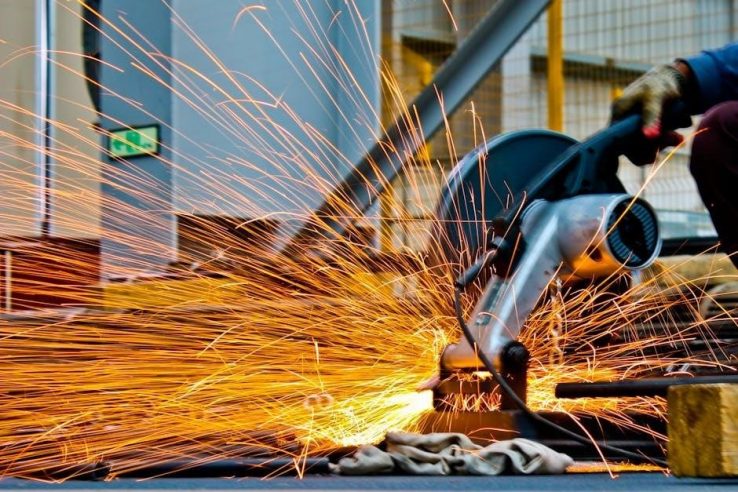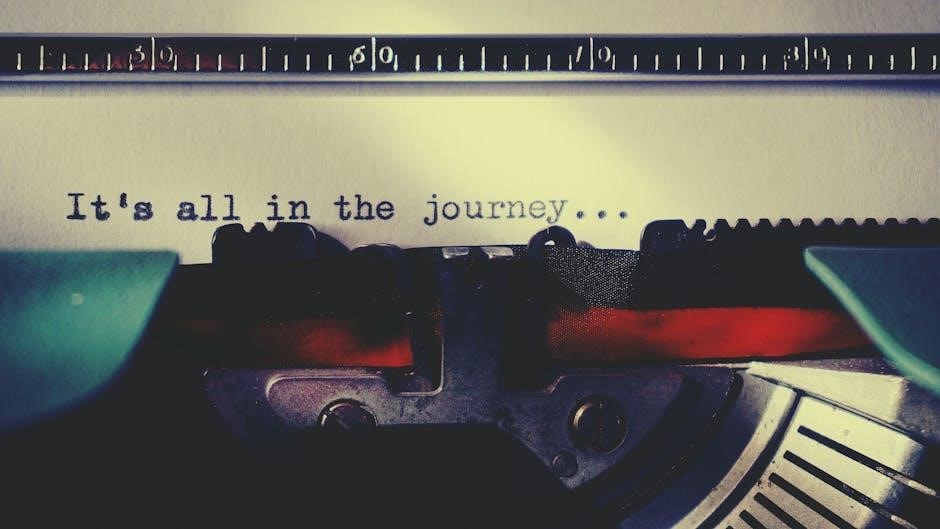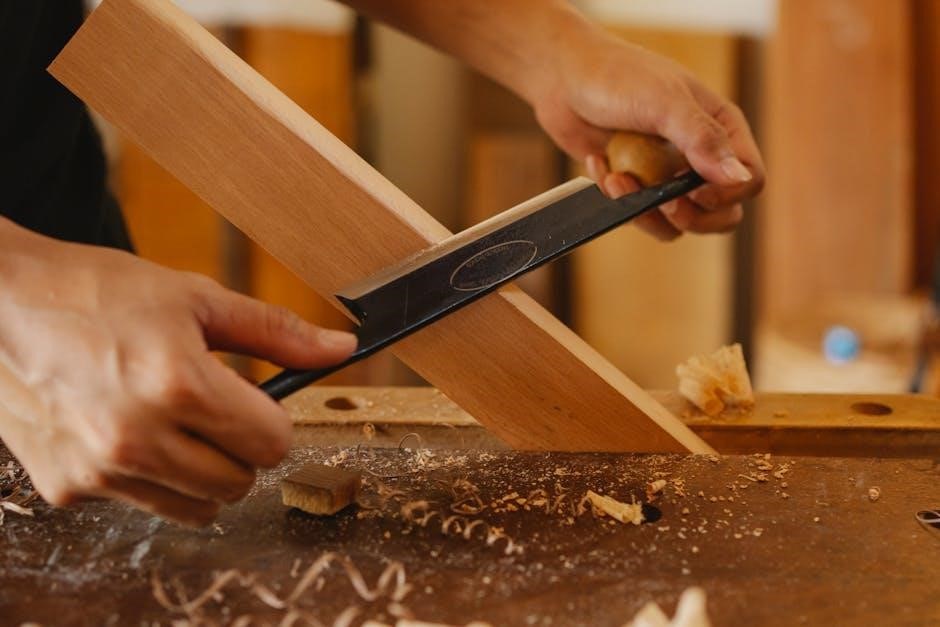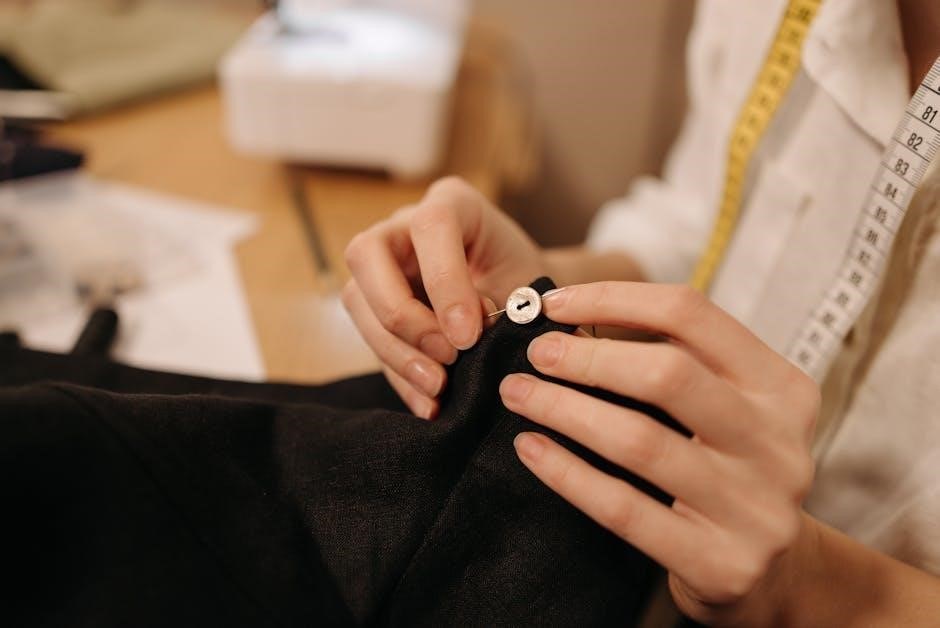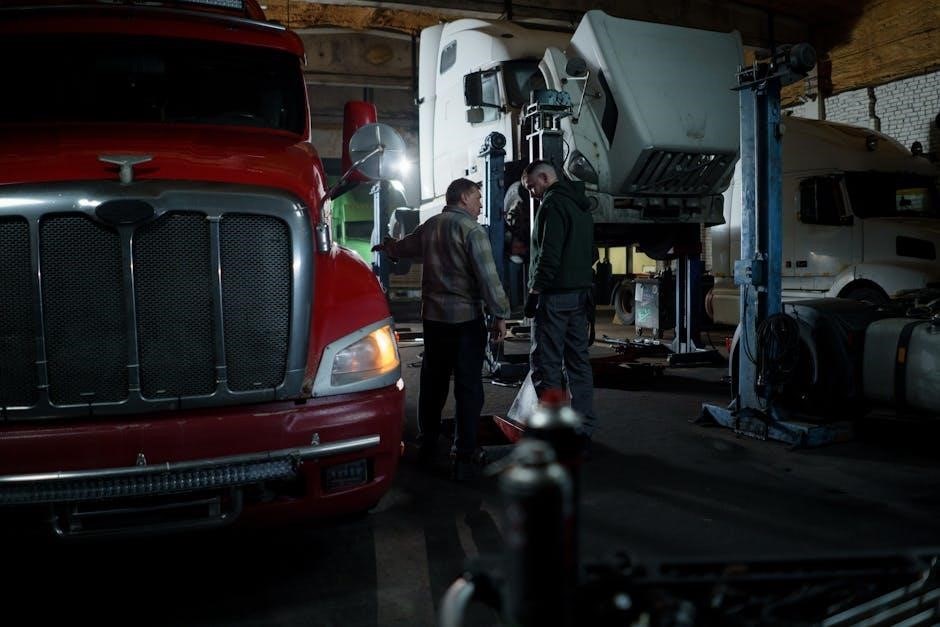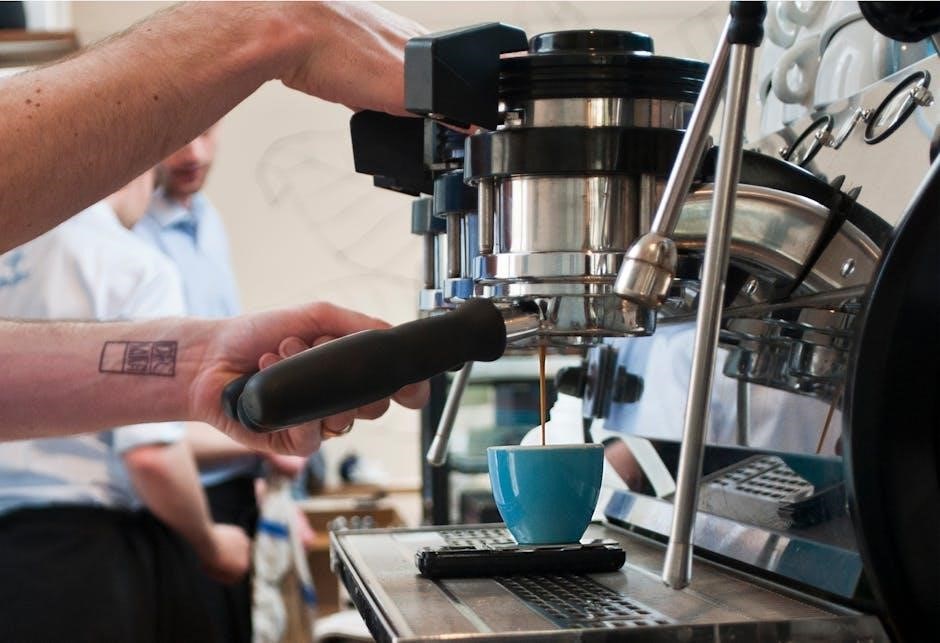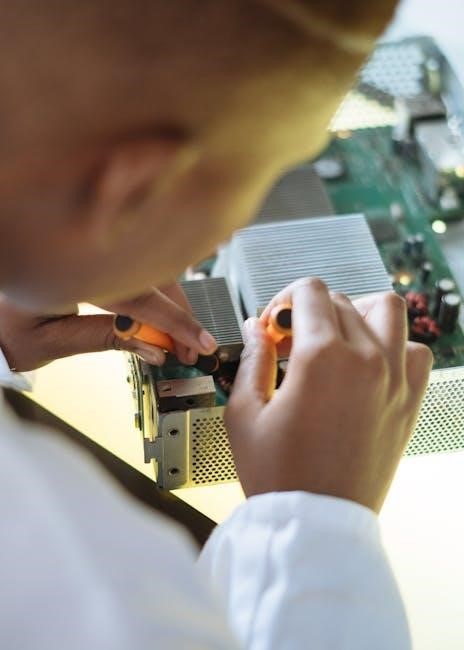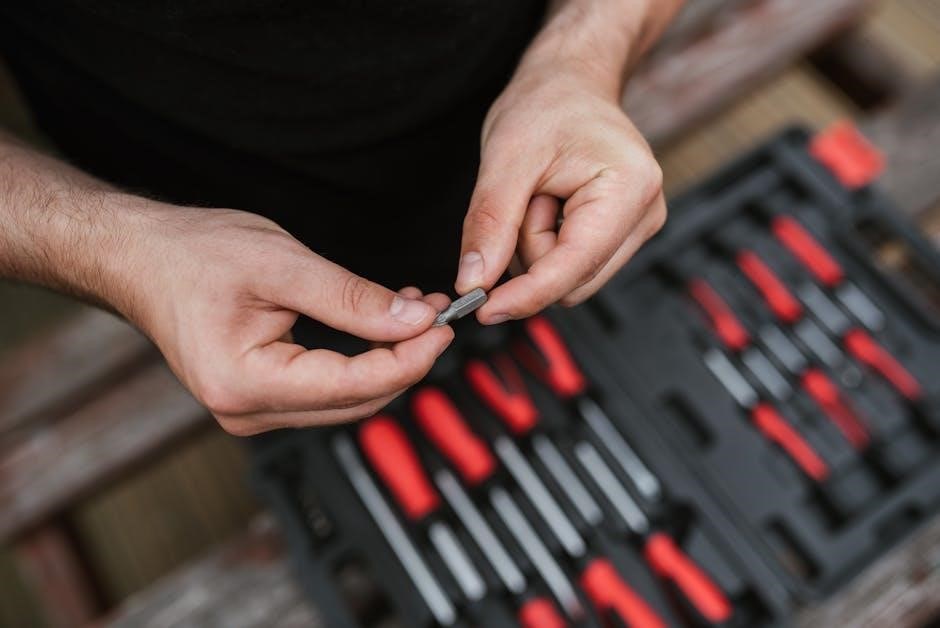Energy Encore 8 5․1 Surround Sound System: A Comprehensive Guide
Unlock the full potential of your Energy Encore 8 system! This guide provides essential setup, troubleshooting, and maintenance details for optimal cinematic audio enjoyment․
Welcome to an immersive audio experience! The Energy Encore 8 5․1 surround sound system is designed to deliver high-fidelity sound, bringing your movies, music, and games to life․ This comprehensive system, now part of the Klipsch Group, builds upon Energy’s legacy of quality loudspeakers, founded in 1973․
This manual serves as your guide to maximizing performance and ensuring long-lasting listening satisfaction․ It details proper installation, component connections, and system customization․ Whether you’re a seasoned audiophile or new to surround sound, this resource will help you navigate the features and troubleshoot potential issues․ Downloadable resources and support are readily available to enhance your experience․
System Overview and Components
The Energy Encore 8 5․1 system comprises several key components working in harmony to create a captivating soundstage․ This includes five satellite speakers – designed for precise audio reproduction – and a powerful subwoofer (model ESW-8) delivering deep, resonant bass․ A central channel speaker enhances dialogue clarity, crucial for immersive movie experiences․
The system requires a compatible AV receiver to process audio signals and power the speakers․ While the manual focuses on system operation, receiver-specific instructions are essential for proper setup․ Energy, now under the Klipsch Group, prioritizes quality and performance․ Refer to the included documentation and online resources for detailed component specifications and optimal system configuration․

Setting Up Your Energy Encore 8 System
Proper installation is key! This section details unboxing, speaker placement, and connection procedures, ensuring optimal performance and a truly immersive audio experience․
Unboxing and Component Checklist
Carefully unpack your Energy Encore 8 5․1 system, verifying all components are present․ Your package should include five satellite speakers, a dedicated center channel speaker, and a powerful subwoofer․ Additionally, confirm the receiver manual is included, alongside all necessary speaker wires and the remote control․
Inspect each speaker for any visible damage incurred during shipping․ A quick visual check ensures everything arrived in perfect condition․ Cross-reference the contents with the included documentation to guarantee nothing is missing․ Retain the original packaging for potential future transport or warranty claims․ Proper inventory now prevents frustration later during setup and ensures a seamless audio experience․
Speaker Placement for Optimal Surround Sound
Achieving immersive audio with your Energy Encore 8 hinges on strategic speaker placement․ The goal is to create a soundstage that envelops you, enhancing the cinematic experience․ Consider your room’s dimensions and furniture arrangement when positioning each speaker․ Avoid obstructions that might block sound waves, and prioritize symmetry for balanced audio․
Proper placement isn’t just about location; it’s about angles too․ Experiment with slight adjustments to find the “sweet spot” where sound is clearest and most impactful․ Remember, the manual offers specific recommendations for each speaker type – front, center, surround, and subwoofer – to maximize performance and truly bring your movies and music to life․
Front Speakers: Positioning and Angle
Positioning your Energy Encore 8 front speakers is crucial for a solid soundstage foundation․ Place them equidistant from your primary listening position, flanking your television or projection screen․ Aim for an equilateral triangle – the distance between the speakers should roughly equal the distance from each speaker to you․
Toe-in is key! Gently angle the front speakers inward, directing sound towards the listening area․ Experiment with the degree of toe-in; a slight angle often provides the best balance between focused imaging and a wider soundstage․ The manual details optimal angles based on room acoustics and personal preference, ensuring clarity and impactful sound reproduction․
Center Channel Speaker: Placement Guidelines
The Energy Encore 8 center channel speaker anchors dialogue and crucial on-screen sounds․ Position it directly above or below your television, as close to the screen as possible․ Ensure the front of the speaker is flush with the screen’s edge to maintain accurate audio-visual synchronization․
Avoid obstructions! Do not place objects in front of the center channel, as this can muffle or distort dialogue․ A slight upward or downward tilt may be necessary to direct sound towards the primary listening position․ Refer to the manual for specific angling recommendations based on your setup․ Proper placement dramatically enhances clarity and intelligibility of vocals․
Surround Speakers: Achieving Immersive Audio
Energy Encore 8 surround speakers create a captivating, three-dimensional soundscape․ Position them to the sides and slightly behind the primary listening position, ideally at ear level․ A common setup involves placing them at a 90- to 110-degree angle relative to the center channel․
Diffuse sound is key! Avoid direct line-of-sight between the surround speakers and the listening area․ Wall or ceiling mounting can enhance diffusion, creating a more enveloping experience․ Consult the manual for optimal height and angle adjustments․ Experiment with placement to find the sweet spot for immersive sound effects and ambient audio․
Subwoofer Placement: Finding the Sweet Spot
The Energy Encore 8 subwoofer delivers powerful low-frequency effects․ Placement significantly impacts bass response; experimentation is crucial․ Start by positioning it along a wall, away from corners, to minimize boominess․ The “subwoofer crawl” method is recommended: place the subwoofer at your listening position and crawl around the room to identify where the bass sounds smoothest․
Avoid nulls and peaks! Once located, place the subwoofer in that spot․ Consider room dimensions and furniture placement․ Multiple short-wall placements can sometimes yield better results than a single long-wall position; Refer to the manual for specific guidance and calibration procedures to optimize integration with the other speakers․

Connecting the System
Proper connections are key! This section details connecting speakers to your receiver, calibrating the subwoofer, and linking your favorite source devices seamlessly․

Connecting Speakers to the Receiver
Establishing a solid connection between your Energy Encore 8 speakers and your AV receiver is fundamental for optimal sound quality․ Carefully examine your receiver’s rear panel; you’ll find color-coded terminals corresponding to each speaker channel – front left, front right, center, surround left, surround right, and subwoofer․
Using speaker wire of appropriate gauge (typically 16-18 AWG is recommended), connect each speaker to its designated terminal, ensuring correct polarity (+ to + and – to –); Incorrect polarity can result in phase cancellation and diminished bass response․ Double-check all connections for tightness and security․

Refer to your receiver’s manual for specific wiring diagrams and instructions․ A secure and properly wired connection will lay the groundwork for an immersive and enjoyable surround sound experience with your Energy Encore 8 system․
Subwoofer Connection and Calibration
Proper subwoofer connection and calibration are crucial for impactful bass and a balanced soundstage․ Connect the subwoofer cable from the receiver’s dedicated subwoofer output to the subwoofer’s line-in input․ Ensure a secure connection․
Next, utilize your receiver’s built-in calibration tools – often involving a test tone and microphone – to optimize the subwoofer’s level and crossover frequency․ The crossover determines which frequencies are sent to the subwoofer versus the other speakers․
Experiment with different crossover settings (typically between 80Hz and 120Hz) to find what sounds best in your room․ Adjust the subwoofer’s volume to blend seamlessly with the rest of the system, avoiding overpowering or muddy bass․ Careful calibration unlocks the full potential of your Energy Encore 8’s low-frequency performance․
Connecting Source Devices (Blu-ray, TV, etc․)
Seamlessly integrate your entertainment sources with your Energy Encore 8 system․ Utilize HDMI connections whenever possible for both audio and video, ensuring the highest quality signal transfer; Connect your Blu-ray player, TV, and other devices to the receiver’s HDMI inputs․
For older devices lacking HDMI, employ optical or RCA audio cables, connecting them to the corresponding inputs on the receiver․ Ensure the receiver is set to the correct input source corresponding to each connected device․
Within your receiver’s settings, confirm that audio output is configured for the connected source․ This may involve selecting “Auto” or specifying the audio format (Dolby Digital, DTS)․ Proper connection and configuration unlock the full immersive potential of your system․

Understanding the System Features
Explore advanced functionalities! The Energy Encore 8 supports Dolby and DTS decoding, offering customizable receiver settings for tailored audio experiences and optimal sound․
Decoding Formats Supported (Dolby, DTS)
Immersive Audio Capabilities: The Energy Encore 8 5․1 system is engineered to deliver a truly captivating audio experience through its support of industry-standard decoding formats․ Primarily, this system expertly handles both Dolby and DTS technologies, crucial for reproducing high-fidelity surround sound from Blu-ray discs, streaming services, and other compatible sources․
Dolby Digital and DTS Decoding: These formats enable the system to accurately interpret and distribute audio signals across all five speakers and the subwoofer, creating a realistic and enveloping soundstage․ Proper decoding ensures that sounds are positioned correctly within the listening environment, enhancing the sense of immersion․ The receiver within your system plays a vital role in processing these signals effectively․

Optimizing Decoding Performance: To maximize the benefits of Dolby and DTS, ensure your source device is configured to output these formats․ Refer to your source device’s manual for specific instructions․ The Energy Encore 8 is designed to provide a rich, detailed, and dynamic audio experience when utilizing these advanced decoding capabilities․
Receiver Settings and Customization
Tailoring Sound to Your Space: Your Energy Encore 8 receiver offers extensive customization options to optimize performance for your specific room and listening preferences․ Accessing the receiver’s settings menu allows you to fine-tune various parameters, ensuring the best possible audio quality․
Key Customization Areas: Explore settings for speaker configuration (defining size and distance), audio processing modes (selecting Dolby or DTS), and equalization․ Adjusting these settings allows you to compensate for room acoustics and personal sound preferences․ Careful calibration is key to unlocking the system’s full potential․
Advanced Settings: Further customization includes crossover settings, which determine which frequencies are sent to each speaker, and dynamic range control, which manages the difference between loud and quiet sounds․ Experiment with these settings to achieve a balanced and immersive sound experience perfectly suited to your environment․
Adjusting Speaker Levels
Achieving Balance: Proper speaker level calibration is crucial for a truly immersive surround sound experience with your Energy Encore 8 system․ The goal is to ensure each speaker contributes equally to the overall soundstage, creating a balanced and natural audio environment․
Utilizing the Receiver’s Tools: Most receivers include a built-in sound level meter or microphone calibration system․ This tool plays test tones through each speaker while you adjust the individual output levels until they are consistent․ Manual adjustment is also possible, relying on your ears to identify imbalances․
Fine-Tuning for Optimal Sound: Pay close attention to the center channel, ensuring dialogue is clear and prominent․ Surround speakers should be set at a lower level, creating an enveloping effect without overpowering the front soundstage․ Consistent levels create a cohesive and realistic listening experience․
Crossover Settings Explained
Understanding Crossover Frequency: Crossover settings determine which frequencies are sent to your Energy Encore 8 speakers versus the subwoofer․ This is vital for seamless audio integration and optimal performance․ A correctly set crossover ensures a smooth transition between speakers, avoiding gaps or overlaps in the frequency response․
Setting the Right Frequency: Typically, a crossover point between 80Hz and 120Hz is recommended for most 5․1 systems․ Lower frequencies are handled by the subwoofer, while higher frequencies are directed to the satellite speakers․ Experimentation is key, as room acoustics and speaker capabilities influence the ideal setting․
Receiver Configuration: Access your receiver’s settings menu to adjust the crossover frequency for each speaker channel․ Start with a moderate setting and fine-tune based on listening tests, aiming for clear, balanced sound across the entire frequency spectrum․
Equalization and Sound Modes
Fine-Tuning Your Audio: The Energy Encore 8 receiver offers equalization (EQ) and preset sound modes to tailor the audio to your preferences and content․ EQ allows you to adjust specific frequency ranges, boosting or reducing them to correct room acoustics or personal taste․
Preset Sound Modes: Explore the available sound modes like “Movie,” “Music,” “Game,” and “Direct․” These presets optimize the audio settings for specific content types, providing a more immersive and enjoyable listening experience․ “Direct” mode bypasses all processing for a pure, unaltered sound․

Custom EQ Settings: For advanced users, custom EQ settings provide granular control over the audio․ Experiment with different settings to achieve the desired sound signature, ensuring balanced and clear audio reproduction throughout your listening space․
Troubleshooting Common Issues
Resolve audio problems quickly! This section details solutions for no sound, distortion, subwoofer malfunctions, and remote control difficulties with your Energy Encore 8․
No Sound Troubleshooting
Experiencing silence? Begin by verifying the receiver’s power and input selection․ Ensure all speaker wires are securely connected to both the receiver and the speakers themselves – a loose connection is a frequent culprit․ Double-check the volume level on both the receiver and the source device (Blu-ray player, TV, etc․)․
Next, confirm the receiver is set to the correct decoding mode (Dolby, DTS) for the audio source․ If using a TV, verify its audio output settings are configured for external speakers․ Test each speaker individually using the receiver’s speaker test function to identify any potentially faulty components․ Finally, consult the receiver’s manual for specific troubleshooting steps related to no audio output․
Distorted Sound Solutions

Hearing crackling or unclear audio? First, lower the volume level on both the receiver and the source device; excessive volume can cause distortion․ Inspect speaker wires for damage or fraying, replacing them if necessary․ Verify that the speaker impedance matches the receiver’s specifications – mismatched impedance can lead to distortion․
Check the receiver’s crossover settings, ensuring they are appropriately configured for each speaker․ Experiment with different equalization (EQ) settings to fine-tune the sound and reduce harsh frequencies․ If distortion persists with only one speaker, that speaker may be damaged and require repair or replacement․ Consult the receiver’s manual for advanced troubleshooting options․
Subwoofer Not Working: Diagnosis
No bass? Let’s troubleshoot! First, confirm the subwoofer is powered on and the power cable is securely connected․ Check the RCA cable connecting the subwoofer to the receiver; ensure it’s firmly plugged in at both ends․ Verify the receiver is sending a signal to the subwoofer – use the receiver’s speaker test function․
Adjust the subwoofer’s volume and crossover settings; a low volume or incorrect crossover can prevent sound output․ Try a different RCA cable to rule out a faulty connection․ If still silent, test the subwoofer with another receiver if possible․ A failing amplifier within the subwoofer itself may be the issue, requiring professional repair․
Remote Control Issues and Solutions
Frustrated with the remote? Begin by replacing the batteries with fresh ones, ensuring correct polarity․ Aim the remote directly at the receiver’s infrared sensor, unobstructed․ If it still doesn’t respond, try resetting the remote by removing the batteries for several minutes, then reinserting them․
Check for interference from other electronic devices or bright sunlight․ Some remotes require pairing with the receiver; consult your receiver’s manual for pairing instructions; If the remote is damaged (buttons sticky or unresponsive), it may need replacement․ Explore universal remotes as a convenient alternative, programmable for multiple devices․

Maintenance and Care
Preserve your investment! Regularly clean speakers with a soft cloth and store them properly when not in use, following warranty guidelines for support․
Cleaning Your Energy Encore 8 Speakers
Maintaining the pristine condition of your Energy Encore 8 speakers is crucial for both aesthetics and optimal sound quality․ Dust accumulation can subtly impact performance, so regular cleaning is recommended․ Always begin by disconnecting the speakers from the receiver to ensure safety․
Use a soft, dry cloth to gently wipe down the speaker enclosures․ Avoid abrasive cleaners or solvents, as these can damage the finish․ For stubborn grime, lightly dampen the cloth with a mild detergent solution – ensuring it’s wrung out thoroughly to prevent moisture from entering the speaker components․
Pay particular attention to the speaker grilles, carefully removing any dust buildup․ Vacuuming with a soft brush attachment can be effective․ Never use liquids directly on the grilles․ For the woofer and tweeter cones, a very gentle dusting is sufficient; avoid touching them directly․ Consistent, careful cleaning will extend the life and preserve the beauty of your Energy Encore 8 system․
Long-Term Storage Guidelines
If you plan to store your Energy Encore 8 5․1 system for an extended period, proper preparation is essential to prevent damage and ensure future functionality․ Begin by thoroughly cleaning the speakers, as detailed in the maintenance section, to remove dust and debris․
Carefully disconnect all cables and store them separately, labeled for easy re-connection․ Ideally, store the speakers in their original packaging, providing maximum protection against physical impacts and environmental factors․ If original packaging isn’t available, use sturdy boxes with ample padding․
Choose a cool, dry location, away from direct sunlight, extreme temperatures, and humidity․ Avoid storage areas prone to pests or mold․ Periodically check the stored equipment for any signs of deterioration․ Following these guidelines will help preserve your investment and guarantee a seamless return to immersive audio when you’re ready․
Warranty Information and Support
Your Energy Encore 8 5․1 system is covered by a limited warranty against defects in materials and workmanship․ The warranty period typically begins from the date of original purchase, and proof of purchase is required for all claims․
Specific warranty terms, including duration and coverage details, are outlined in the separate warranty document included with your system․ Please retain this document for your records․ For warranty service or support inquiries, contact Klipsch Group, the current owner of Energy loudspeakers․
Visit the Klipsch Group Support Website (see Resources section) for detailed contact information, FAQs, and online support resources․ They offer assistance with troubleshooting, parts replacement, and warranty claim processing․ Ensure you have your model number and serial number readily available when contacting support․
Resources and Further Information
Explore the Energy Speaker System Manual Archive and the Klipsch Group Support Website for additional documentation, FAQs, and expert assistance․
Energy Speaker System Manual Archive
Delve into our comprehensive archive of Energy speaker system manuals, offering a wealth of information for both current and legacy products․ This resource is meticulously curated to provide users with easy access to detailed guides, specifications, and troubleshooting tips․
Locate the official Energy Encore 8 5․1 surround sound system manual alongside documentation for other Energy models․ We strive to maintain a complete collection, ensuring you can find the support you need to optimize your listening experience․
All files are provided under strict license, prohibiting reproduction for financial gain․ Consider donating copies of additional documentation to expand our free archive and benefit the wider community of Energy speaker enthusiasts․
Klipsch Group Support Website
For dedicated support and resources regarding your Energy Encore 8 5․1 system, visit the official Klipsch Group support website․ As Energy is now part of the Klipsch Group, their platform serves as the primary hub for assistance․
Explore a comprehensive knowledge base, frequently asked questions, and troubleshooting guides tailored to Energy products․ You can also access downloadable manuals, including the Energy Encore 8 5․1 surround sound system manual, and submit support requests directly to their team․
Benefit from expert assistance and ensure your system operates at peak performance․ The Klipsch Group website is your go-to destination for all Energy-related support needs․

